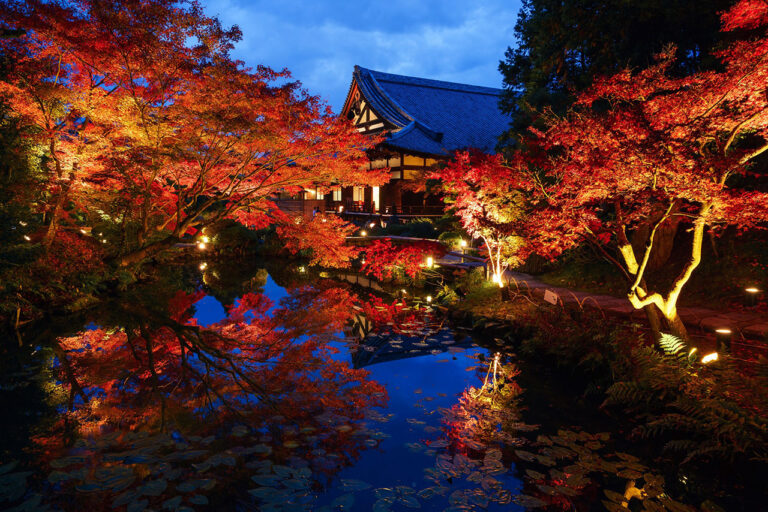
Special Night-time Viewing / Kurodani Konkai Komyoji Temple
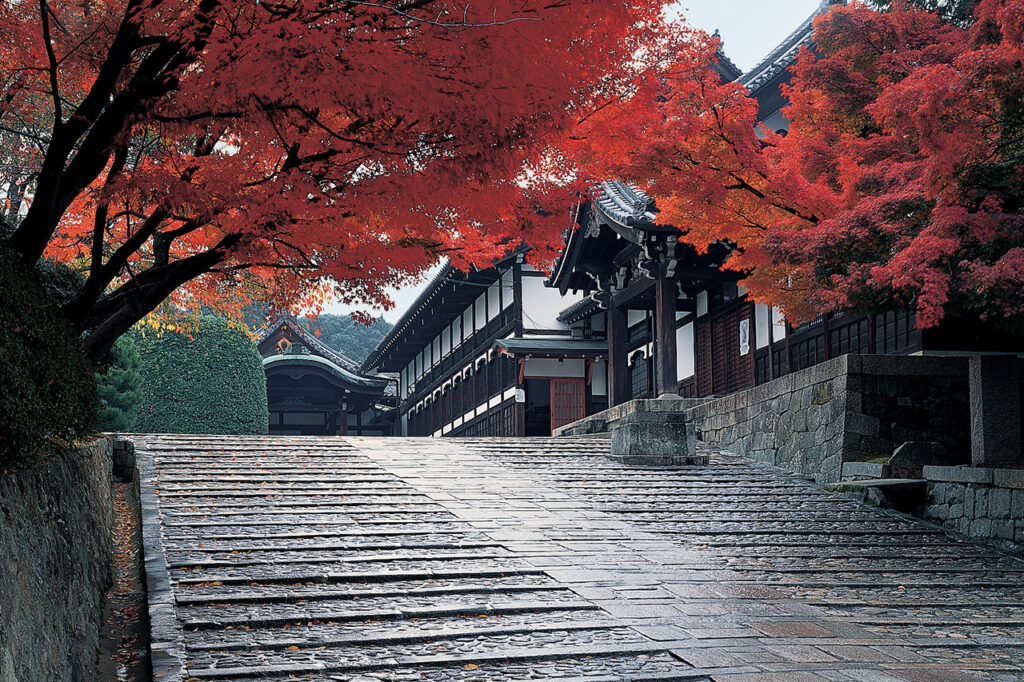
(C) Katsuhiko Mizuno

At the end of the Heian period, the 43-year-old Honen Shonin, who had completed his training at Mt. The people of Kyoto affectionately call him “Kurotani-san” after Honen Shonin, who was also called Kurotani Shonin.
In the Edo period, the Tokugawa shogunate gave it a mission as a castle, and it became an important presence along with Chion-in Temple. The connection with the Aizu Domain and the Shinsengumi also boosts history lovers. Although it is a spot for autumn foliage that is frequently used as a filming location, it is difficult to see from Marutamachi Street and is not a tourist spot, so it is relatively easy to see. The moment the scenery of the precinct spreads out in front of you, you should be impressed by its grandeur.
It is also known for its beautiful cherry blossoms and autumn leaves. During the fall foliage season, the tunnel of foliage extending from both sides of the hill and the three-story pagoda at the back of the tunnel make for an exceptional sight.
A splendid temple gate with a height of about 23m that was rebuilt in 1860. The Aizu clan established the Kyoto Shugoshoku headquarters here, and it was also the birthplace of the Shinsengumi.
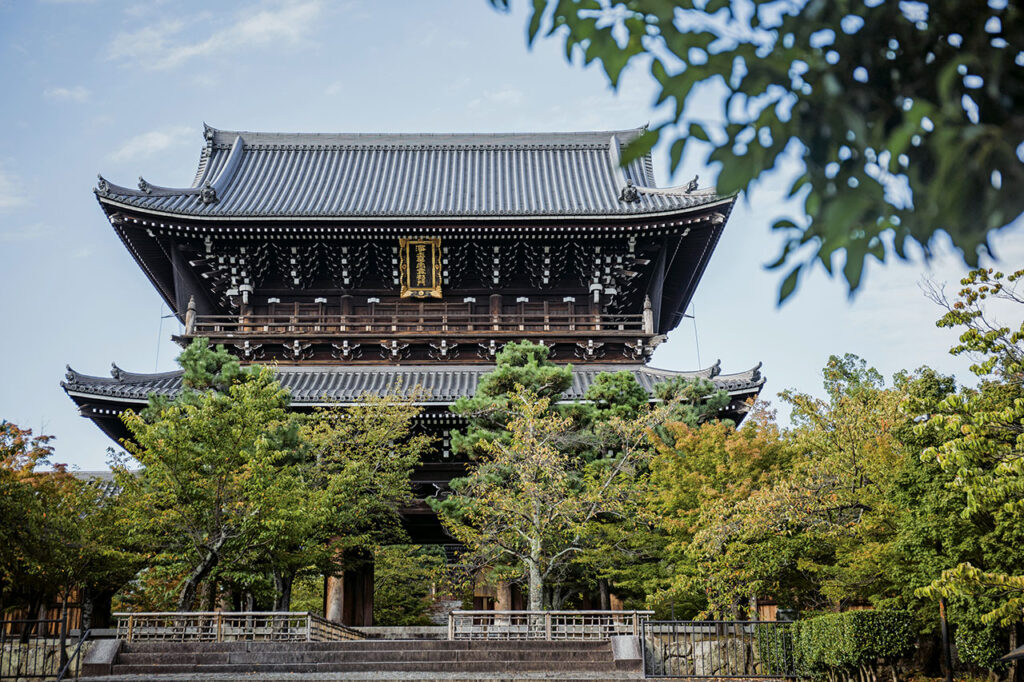

A statue of Honen Shonin is enshrined in the center. Also enshrined are Kibi Kannon, which is believed to bring blessings such as traffic safety and warding off misfortune, and Nakayama Monju, which is said to have been made by Unkei. You can even see the skyscrapers of Abeno from the corridor.
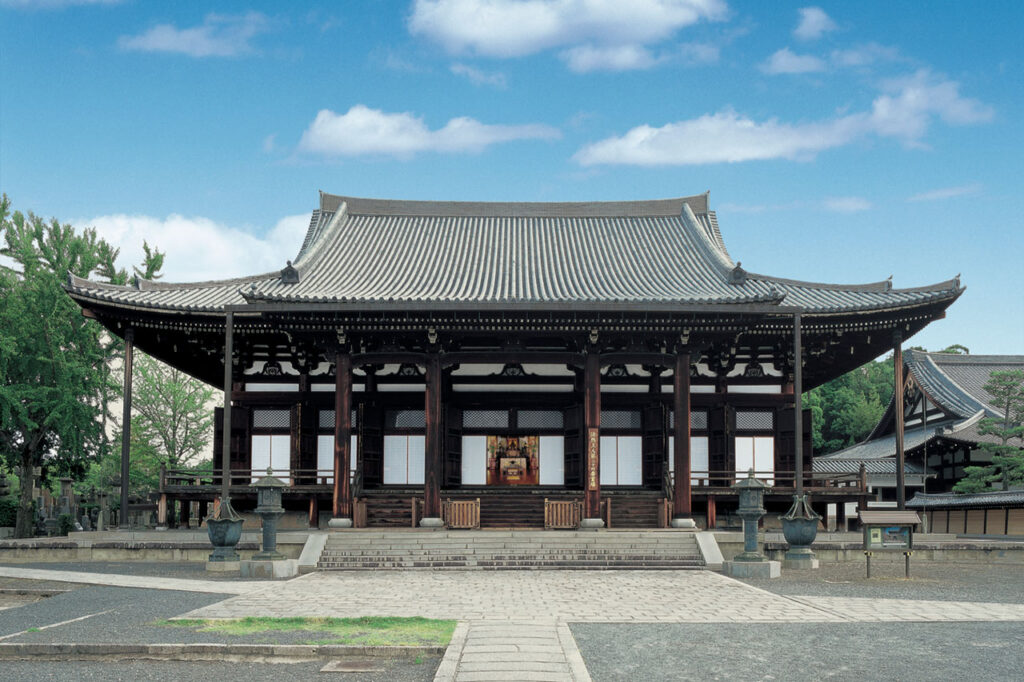
(C) Katsuhiko Mizuno

The large hojo is a feast for the eyes, with the “Fusuma-e of Tigers” drawn by Kinsen Kubota, a painter born in Kyoto. In the "Shiun Garden" in the back, the life of Honen Shonin and the spread of the Jodo sect of Buddhism are expressed in dry landscape gardens. You can also go down to the deep garden and take a walk.
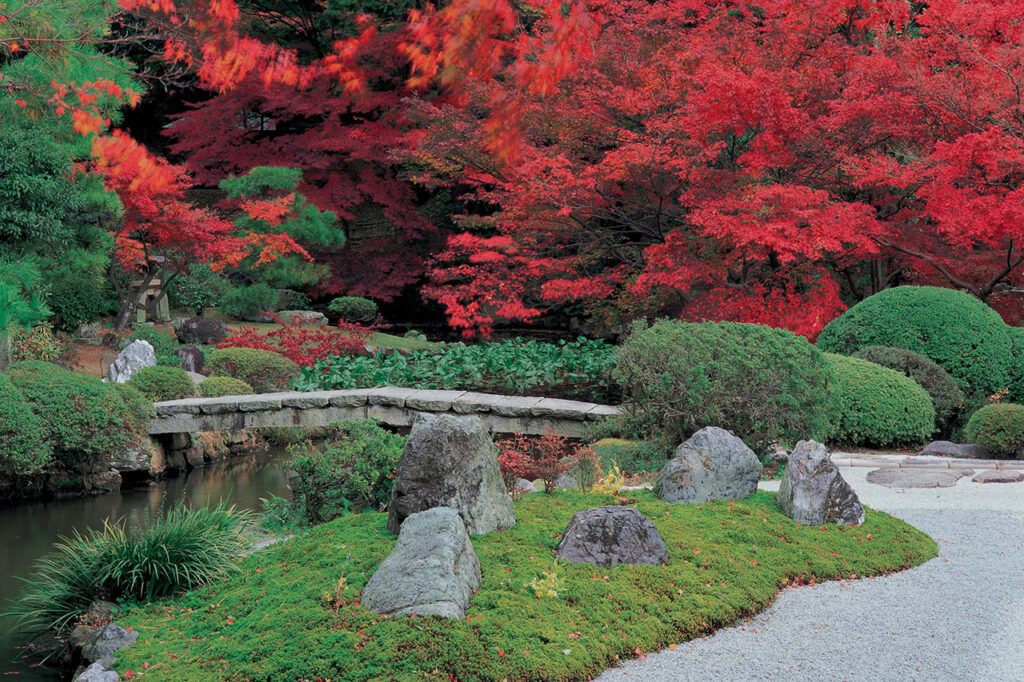
(C) Katsuhiko Mizuno

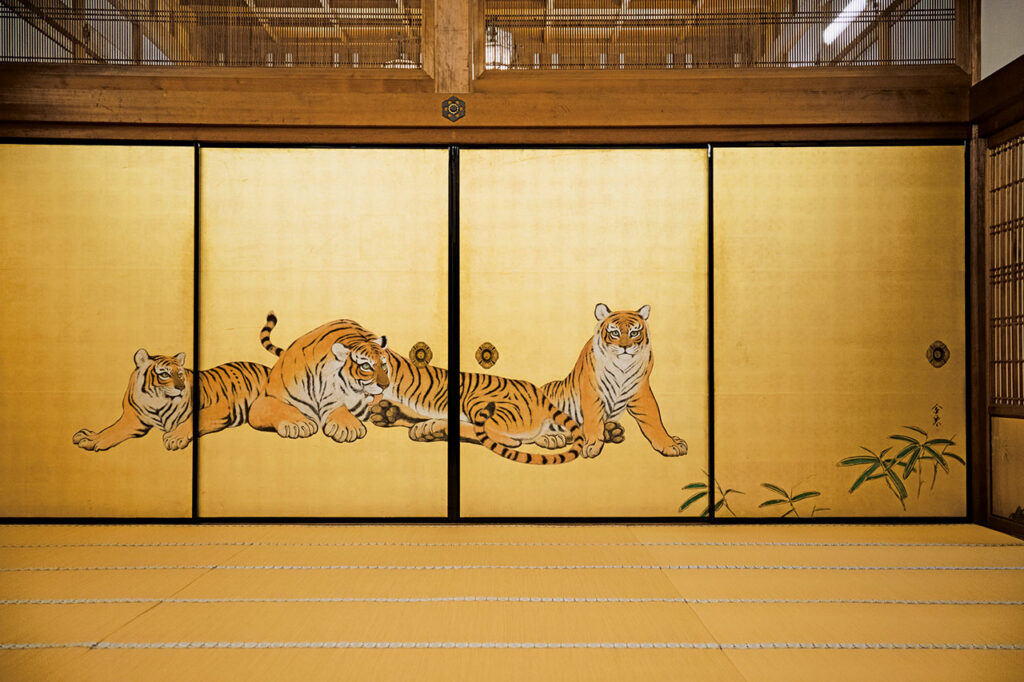

During the cherry blossom season, the vast temple area is decorated with approximately 100 cherry trees, including Someiyoshino cherry trees and weeping cherry trees. In particular, the cherry blossoms along the path in front of the 23-meter-high gate, the Gokuraku Bridge, and the lotus pond are especially beautiful.
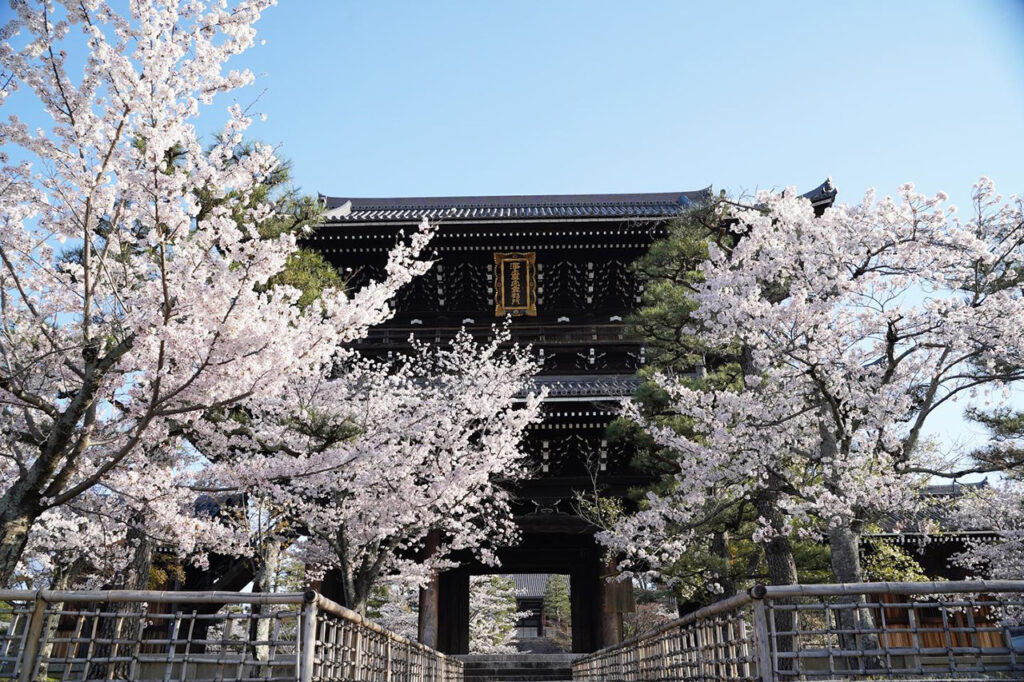

Over 600 interviews per year! An order site carefully selected by the editors who knows Kyoto and Shiga.
nowOfficial LINE friend registration500 yen OFF coupon is being issued!
Distributed every Friday morning at 8:00 am! From new restaurant information to event information that we want to share with you, We deliver articles about Kyoto that are useful to know. About 20,000 people have registered.Click here to add a friend!
 News
News Feature article
Feature article Featured event
Featured event